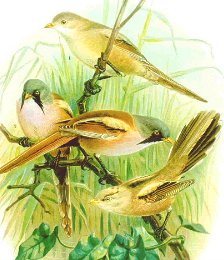Tune of the Day: Aviary

Carnival of the Animals is a set of orchestral character pieces, each of which is meant to describe a particular animal, usually by mimicking the sounds it makes or characterizing the way it moves or carries itself. The piece is scored for two solo pianos and a small orchestra of flute, piccolo, clarinet, xylophone, glass harmonica (usually replaced these days by celesta or glockenspiel in performance), and strings. This Carnival is a humorous, often parodistic work. Saint-Saëns only allowed the piece to be performed twice during his lifetime (once publicly by the Societe de la Trompette and once in a private performance requested by Franz Liszt, the famous piano virtuoso and composer who was a close friend of Saint-Saëns), likely because he feared the work would hurt his reputation as a serious composer. Only the movement “The Swan” was published before the composer's death.
The tenth movement, Volière (“Aviary”) depicts the fluttering calls of birds through a rapid flute solo that spans much of the range of the instrument. The similarity in sound to a flock of mixed birds is very noticeable. The movement ends very quietly after a long ascending flute scale.
